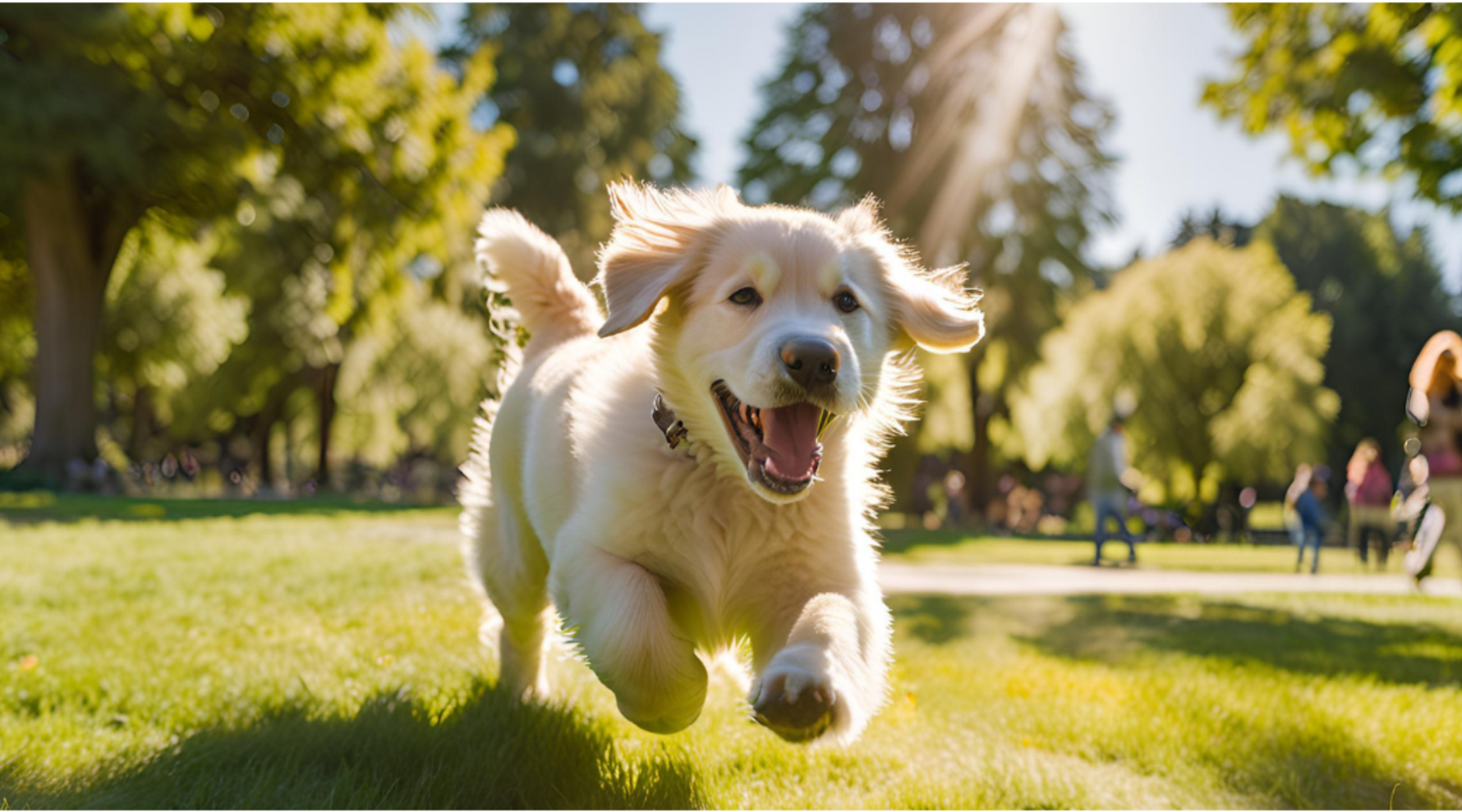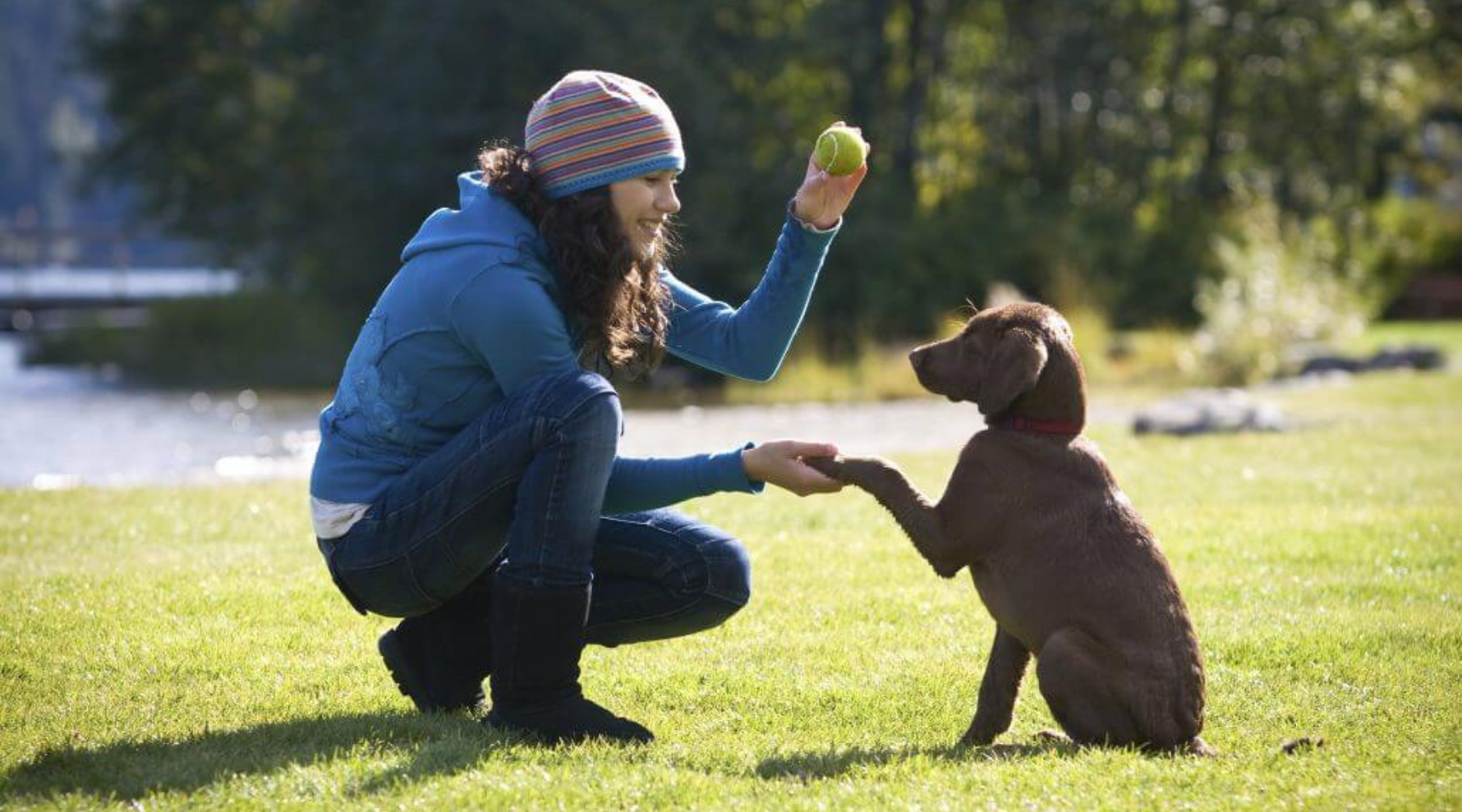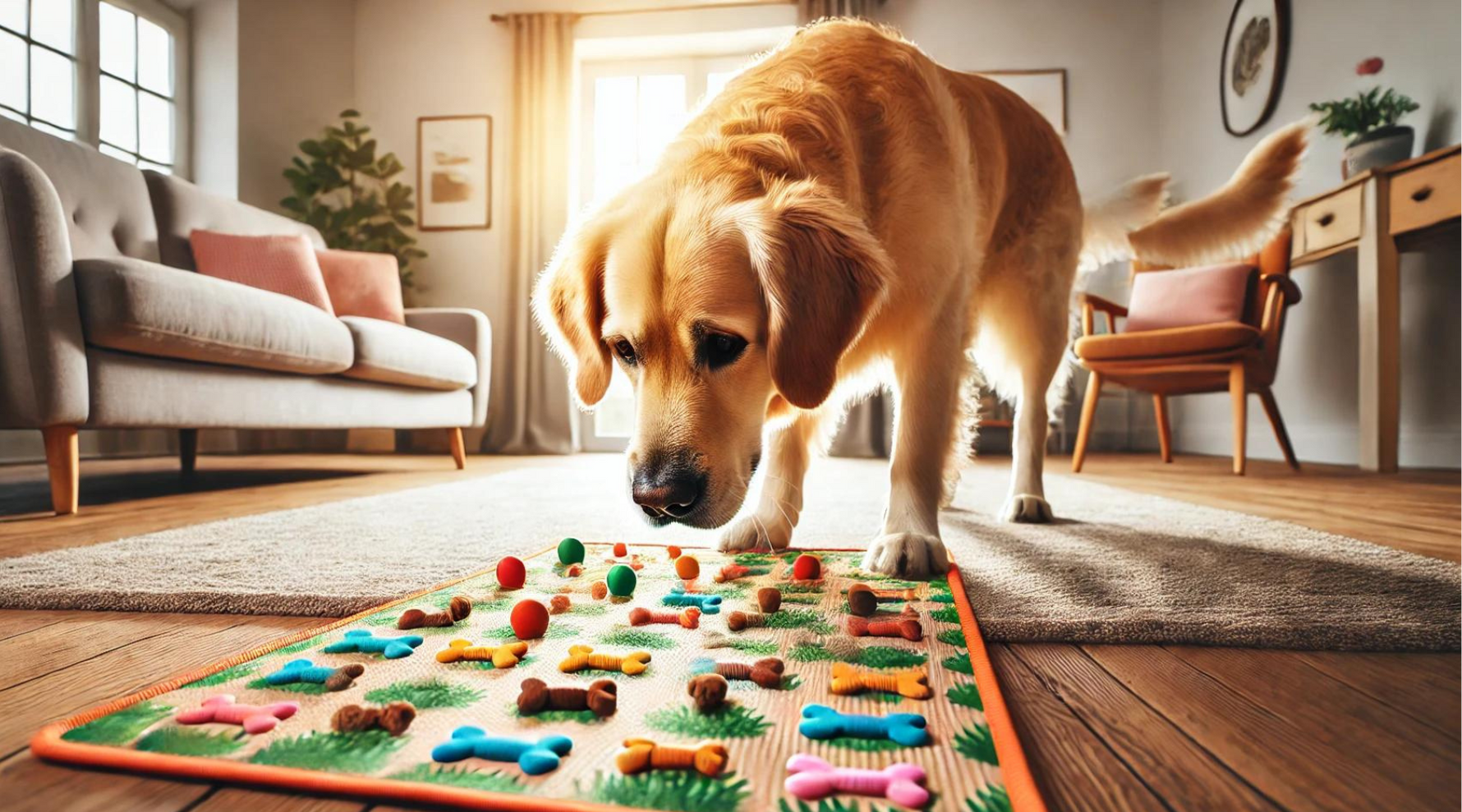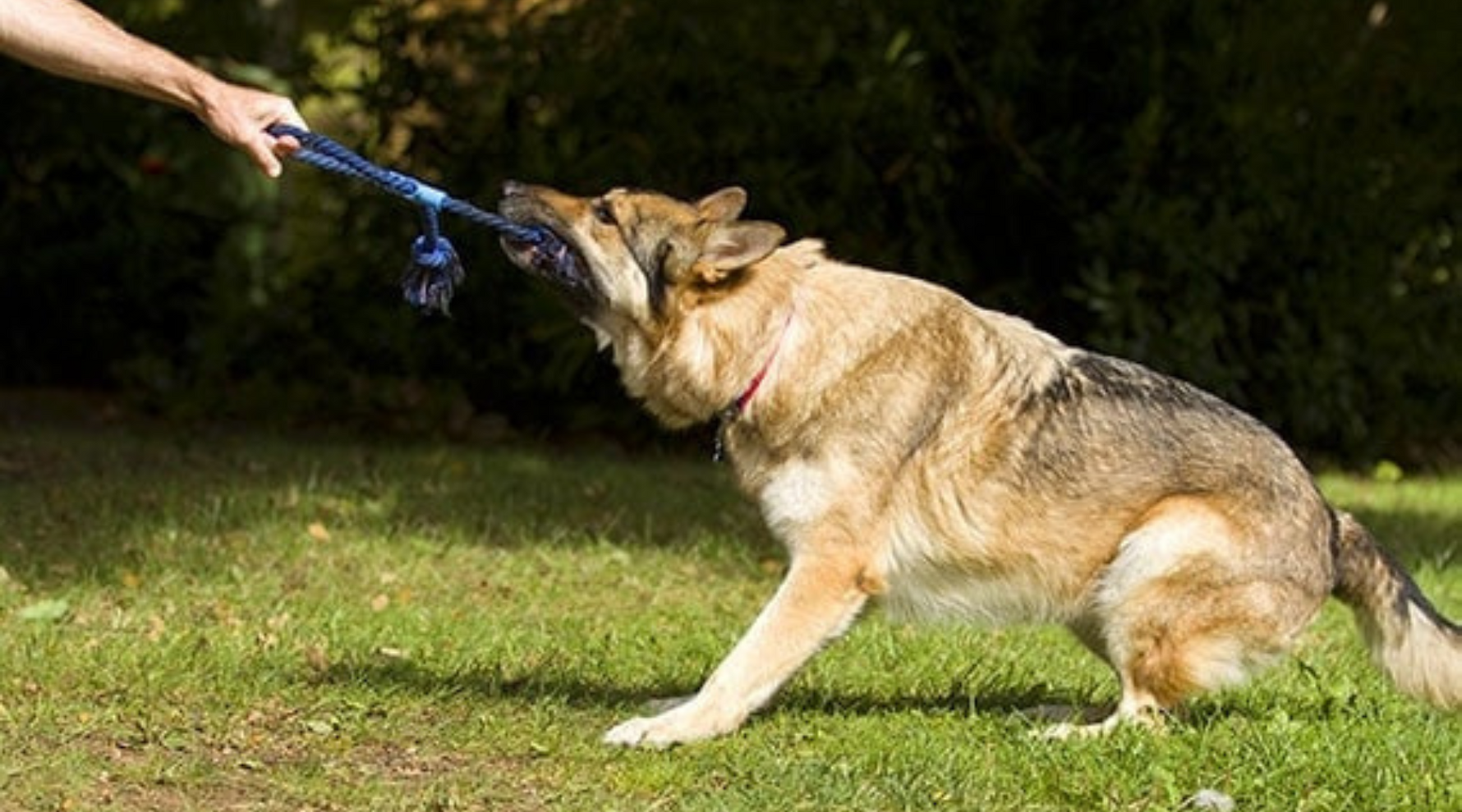Select Pickup Location
Select Pickup Location
Select store
Select store
Large Breed Dogs

Large Breed Dogs
Caring for Your Large Breed Puppy 101: A Comprehensive Guide
by Shopify API
on Jan 21 2025
Welcoming a large breed puppy into your home is an exciting adventure, but it comes with unique responsibilities. These gentle giants require specialized care to ensure they grow up healthy, well-behaved, and thriving.
Here's everything you need to know, from essential facts and activities to nutrition recommendations designed specifically for large breed puppies.
Basic Facts About Large Breed Puppies
1. Rapid Growth, Special Needs
Large breed puppies (like Great Danes, Labradors, and Saint Bernards) grow quickly but remain "puppies" longer than smaller breeds. This means they need tailored nutrition and exercise during their extended development phase, which typically lasts until 18–24 months.
2. Joint and Bone Health
These breeds are prone to joint issues, including hip and elbow dysplasia. Proper diet, exercise, and weight management are critical to minimizing the risk of such problems.
3. Size-Appropriate Housing
Prepare for their eventual size by ensuring your home has ample space. Large breed puppies need room to move freely and a secure, spacious sleeping area.
Activities for a Well-Behaved Large Breed Puppy
1. Socialization
Introduce your puppy to various environments, people, and animals early to build confidence and reduce fear-based aggression.
2. Training Basics
Start training as early as possible with positive reinforcement techniques. Focus on commands like "sit," "stay," and leash manners—essential for controlling a strong, large dog.
3. Gentle Exercise
Avoid high-impact activities like running or jumping until their bones are fully developed. Opt for gentle walks, interactive play, and swimming, which are easier on their growing joints.
4. Mental Stimulation
Large breeds are intelligent and require mental challenges to prevent boredom. Use puzzle toys, treat dispensers, or scent games to keep their minds sharp.
Eating Guide for Large Breed Puppies
1. Portion Control
Overfeeding can lead to excessive weight gain, increasing stress on joints. Follow feeding guidelines on your puppy food package and consult your vet for adjustments based on activity level and age.
2. Meal Frequency
Feed large breed puppies smaller, more frequent meals (3–4 times a day) to prevent bloating, a condition they’re prone to. Reduce to twice daily as they approach adulthood.
3. Avoid Human Foods
Stick to high-quality puppy food formulated for large breeds. Avoid feeding table scraps, especially foods toxic to dogs like chocolate, onions, and grapes.
Large Breed Puppy Nutrition: What Do They Need to Thrive?
Why Choose MEGA Chicken Puppy Formula?
For large breed puppies, nutrition plays a key role in healthy development. MEGA Chicken Puppy Formula is specially designed to meet the unique needs of growing large breeds:
High-Quality Protein: Real chicken as the first ingredient supports muscle development and provides essential amino acids for growth.
Balanced Calcium and Phosphorus Levels: Helps ensure strong, healthy bones and minimizes the risk of skeletal abnormalities.
Omega-3 and Omega-6 Fatty Acids: Promote brain development, a shiny coat, and reduce inflammation, supporting joint health.
Glucosamine and Chondroitin: These essential supplements help strengthen joints and cartilage, which is especially important for large breeds prone to joint issues.
Controlled Calorie Levels: Prevents rapid weight gain that can stress developing joints, ensuring steady, healthy growth.
How to Feed MEGA Chicken Puppy Formula
Portion Size: Follow the feeding chart on the packaging based on your puppy's weight and age. Adjust portions as recommended by your vet.
Frequency: Feed 3–4 smaller meals per day, transitioning to 2 meals as your puppy matures.
Transitioning Foods: When switching to MEGA Chicken Puppy Formula, gradually mix it with your puppy’s current food over 7–10 days to prevent digestive upset.
With MEGA Chicken Puppy Formula, your large breed puppy will get the essential nutrition they need to thrive. Pair this with proper care and training, and you’ll set your furry friend up for a long, happy, and healthy life.

Large Breed Dogs
Tricks for Large Dogs: Essential Skills Every Big Pup Should Learn
by Shopify API
on Dec 19 2024
Large dogs bring unique charm and challenges to our lives. Their size, strength, and energy can be both endearing and demanding, making training an essential part of their care. Beyond the basic commands like "sit" and "stay," teaching your large dog specific tricks can improve their behavior, strengthen your bond, and even keep them safer in everyday situations. Here's a roundup of tricks and skills every large dog should learn, tailored to their needs and abilities.
1. Mastering the Basics: Sit, Stay, and Come
Before diving into advanced tricks, these three foundational commands are essential:
Sit: Helps manage your dog's behavior in public places and ensures they remain calm during mealtime or grooming.
Stay: Crucial for keeping your dog from bolting into unsafe situations.
Come: A lifesaver if your dog gets off-leash or finds themselves in danger.
Pro Tip: Use high-value treats to reinforce these commands and practice in different environments to ensure reliability.
2. Heel Walking: Keeping Walks Under Control
Large dogs are strong, and walking with an unruly giant can be daunting. Teaching them to "heel" ensures they walk calmly by your side instead of pulling you along.
Use a short leash and rewards to encourage them to stay close.
Practice in low-distraction areas before moving to busy streets or parks.
3. "Wait" Command for Doors and Cars
Large dogs have a habit of charging through doors or leaping out of vehicles, which can be dangerous. Teaching them to "wait" keeps them under control until you give the go-ahead.
Start at home by using doorways.
Gradually introduce car doors, ensuring they learn to stay until released.
4. "Leave It" for Dangerous Items
Whether it’s a dropped snack, a tempting shoe, or something hazardous on the ground, the "leave it" command is vital for large dogs who are strong enough to snatch and run.
Use treats to practice this command.
Gradually introduce real-world distractions for a reliable response.
5. Teaching Your Dog to Back Up
Large dogs can unintentionally knock over furniture—or people! Teaching them to "back up" is a handy trick for navigating tight spaces or moving out of the way.
Use a visual cue like stepping toward them or a verbal cue like "back up."
Reward small steps backward with treats and praise.
6. Calm Greetings to Prevent Jumping
Many large dogs love to greet people by jumping up, but this can be overwhelming or even dangerous. Train your dog to sit calmly when meeting someone.
Reinforce calm behavior with treats when guests arrive.
Discourage jumping by turning away until your dog sits.
7. Fetch for Mental and Physical Exercise
Fetch isn’t just for fun; it’s a great way to tire out your big pup while giving them mental stimulation.
Start with short throws and gradually increase distance.
Use durable, size-appropriate toys to prevent choking.
8. Carrying Items: Teach “Take It” and “Bring It”
Large dogs are perfect helpers! Teach them to carry light items like groceries or toys.
Use the command "take it" to pick up an object.
Follow with "bring it" to deliver it to you.
Fun Idea: Train your dog to carry their leash or even bring you a blanket during cozy movie nights!
9. "Place" Command for a Calm Resting Spot
Every large dog needs a dedicated resting space. Teaching them to go to their “place” helps create a calm environment, especially during mealtime or when guests visit.
Use a mat or bed as their "place."
Reward them for lying down and staying there until released.
10. Advanced Tricks for Confidence and Bonding
Once your large dog masters the essentials, why not try some advanced tricks?
Bow: A cute trick that doubles as a stretch for big dogs.
Spin: Great for burning energy in small spaces.
Shake: Always a crowd-pleaser, especially with kids!
Why Training is Essential for Large Dogs
Large breeds often have longer growth periods and boundless energy, which can lead to unintentional mischief. Proper training ensures they remain well-behaved and safe in various situations. Tricks like "wait," "heel," and "leave it" are particularly useful for navigating their strength and size.
Tips for Training Success
Consistency: Practice regularly to reinforce commands.
Patience: Big dogs may take time to master commands due to their size and energy.
Positive Reinforcement: Use treats, toys, and praise to motivate your dog.
Adaptation: Tailor tricks to your dog’s abilities and personality.
Make Training Fun and Rewarding
Training is not just about teaching obedience; it’s a chance to deepen your bond with your furry friend. Large dogs thrive on positive attention and structured activity, so make training sessions fun and rewarding.
Remember, a well-trained large dog isn’t just a joy to live with—they’re safer, healthier, and happier too!
Explore Our Products for Training Rewards
Looking for healthy treats to make training sessions even more effective? Addiction Pet Foods offers a range of wholesome options your dog will love. Browse our training treats here.

Large Breed Dogs
Top Toys for Large Breed Dogs - Durable, Fun, and Built to Last
by Shopify API
on Dec 19 2024
Large breed dogs are bundles of energy and strength, making them some of the most fun—and challenging—pets to shop for. Whether you have a playful Labrador, a protective German Shepherd, or a laid-back Great Dane, choosing toys that can handle their size and power is essential. From chew toys to puzzles, we’ve rounded up the best toys that are tough enough to withstand big jaws and keep your dog entertained for hours.
1. Indestructible Chew Toys
Best for: Dogs who love to gnaw on everything in sight.
Large dogs are often heavy chewers, so they need toys that are designed to last. Chew toys made from materials like natural rubber or nylon are excellent options for these strong pups.
Top Picks:
KONG Extreme: Known for its super-durable design, this rubber toy can be filled with treats or peanut butter for extra fun.
Nylabone Power Chew: These long-lasting chew toys are designed to handle the toughest chewers and come in flavors dogs love.
Why It’s Great: Chew toys can help keep your dog’s teeth clean and alleviate boredom.
2. Interactive Puzzle Toys
Best for: Brainy dogs who need mental stimulation.
Big dogs are not only strong but also smart. Puzzle toys can provide an enriching experience by challenging your dog to figure out how to access hidden treats or rewards.
Top Picks:
Outward Hound Dog Brick Puzzle: With multiple compartments to hide treats, this toy keeps your dog engaged and their brain sharp.
KONG Wobbler: A food-dispensing toy that wobbles unpredictably, encouraging your dog to bat it around to release treats.
Why It’s Great: Puzzle toys prevent boredom, reduce stress, and promote problem-solving skills.
3. Durable Fetch Toys
Best for: Dogs who can’t get enough of fetch.
Fetch-loving large breeds need toys that can stand up to repeated throwing, catching, and chewing. Sturdy rubber balls and frisbees are great options for outdoor play.
Top Picks:
Chuckit! Ultra Ball: A high-bounce rubber ball that’s built to last and perfect for fetch in the yard or park.
KONG Flyer: This soft yet durable frisbee is gentle on your dog’s teeth and ideal for long-distance throws.
Why It’s Great: Fetch toys help your dog burn off energy while strengthening the bond between you and your furry friend.
4. Tug-of-War Toys
Best for: Active dogs who love a good tugging challenge.
Rope toys and tug toys are ideal for interactive play with large dogs. They combine chewing, tugging, and pulling in a single activity while providing an excellent workout for your dog’s muscles.
Top Picks:
Mammoth Flossy Chews Rope Tug: This sturdy rope toy is great for games of tug and helps clean your dog’s teeth as they chew.
KONG Tug Toy: Made from tough rubber and durable ropes, this toy is perfect for vigorous tugging sessions.
Why It’s Great: Tugging games can improve your dog’s impulse control while providing them with a fun outlet for their energy.
5. Plush Toys (for Gentle Giants)
Best for: Dogs who prefer soft toys for snuggling or light play.
Not all large dogs are rough with their toys. Some gentle giants love carrying plush toys around or cuddling with them. Look for options with reinforced stitching for added durability.
Top Picks:
KONG Cozie Marvin the Moose: This plush toy has extra layers of material to make it last longer, even during playful nibbles.
Outward Hound Invincibles: These squeaky plush toys are designed to keep squeaking even after being punctured, making them ideal for gentle play.
Pro Tip: Always supervise your dog with plush toys to ensure they don’t accidentally ingest stuffing or squeakers.
Tips for Choosing the Perfect Toy
Match the Toy to Your Dog’s Size: Always select toys designed specifically for large breeds to avoid choking hazards.
Durability is Key: Look for tough materials like rubber, nylon, or reinforced fabric.
Consider Their Play Style: Does your dog love to chew, fetch, tug, or solve puzzles? Choose toys that cater to their preferences.
Rotate Toys Regularly: Switching out toys every week keeps playtime exciting and prevents boredom.
Why the Right Toys Matter
Toys are more than just entertainment for your dog—they’re a vital part of their physical and mental health. The right toys can help reduce destructive behaviors, provide an outlet for energy, and promote better dental health. Plus, regular playtime strengthens the bond between you and your dog, ensuring they’re happy and fulfilled.
Invest in toys that are built to last, and your large breed dog will thank you with wagging tails and endless enthusiasm.

Large Breed Dogs
Big Paws, Big Fun: Perfect Exercises for Large Breed Dogs at Home and Outdoors
by Shopify API
on Dec 19 2024
When it comes to large breed dogs, exercise isn’t just about burning off energy—it’s a vital part of their overall health and well-being. These gentle giants often require a careful balance of activity to keep their joints healthy, maintain a healthy weight, and stimulate their intelligent minds. Whether you’re at home or enjoying the great outdoors, here are some of the best exercises for large breeds, along with tips to make them safe, fun, and effective.
Why Exercise is Crucial for Large Breed Dogs
Large breeds, like Labradors, German Shepherds, and Great Danes, have unique exercise needs due to their size and predisposition to joint issues such as hip dysplasia. Here’s why regular exercise matters:
Healthy Joints: Controlled exercise strengthens muscles that support the joints.
Weight Management: Large dogs are prone to obesity, which exacerbates joint problems.
Mental Stimulation: Exercise prevents boredom-related behavior issues.
Bonding Time: These activities strengthen your connection with your pup.
Perfect Exercises for Large Breed Dogs
1. Low-Impact Walks and Hikes
Why it’s great: Walking or hiking is a simple way to give your dog both physical and mental stimulation while exploring new environments.
Tips for outdoors:
Stick to soft terrain like grass or dirt trails to reduce impact on joints.
Invest in a sturdy harness for better control.
Avoid overexertion, especially in puppies whose joints are still developing.
At home: If outdoor options are limited, consider leash training in your backyard or pacing along hallways in your home.
2. Swimming
Why it’s great: Swimming is a fantastic low-impact exercise that’s easy on the joints while providing a full-body workout.
Tips for outdoors:
Bring your dog to dog-friendly lakes or swimming pools.
Use a canine life jacket for added safety.
Always supervise your dog near water, as not all dogs are natural swimmers.
At home: If you have space, an inflatable kiddie pool can provide splash-filled fun and light exercise.
3. Fetch with a Twist
Why it’s great: Fetch encourages running and cardio while tapping into your dog’s natural instincts to chase.
Tips for outdoors:
Use a ball launcher to cover more distance without tiring yourself.
Avoid throwing objects too high to reduce the risk of joint strain.
At home: Use lightweight toys for short tosses in a long hallway or backyard. Try rolling the ball for a gentler chase option indoors.
4. Agility Training
Why it’s great: Agility exercises keep your dog mentally sharp and physically fit by engaging their problem-solving skills and coordination.
Tips for outdoors:
Set up a DIY obstacle course using cones, tunnels, and jump bars.
Keep jumps low to prevent joint strain.
At home: Use chairs, broomsticks, or even couch cushions to create an indoor agility course. Teach your dog to weave through objects or crawl under tables.
5. Tug-of-War
Why it’s great: Tug-of-war strengthens your dog’s muscles and builds confidence.
Tips for outdoors:
Use a durable rope toy made for large breeds.
Incorporate “drop it” commands to reinforce good behavior.
At home: Tug-of-war is perfect for small indoor spaces. Just make sure to play on a surface with good traction to prevent slipping.
6. Scent Work and Puzzle Games
Why it’s great: Large breeds often thrive on mental stimulation as much as physical exercise.
Tips for outdoors:
Create a scavenger hunt in your yard using hidden treats or toys.
Let your dog “hunt” by following scents you’ve laid out.
At home: Use interactive puzzle toys or hide treats around the house for your dog to find.
7. Stair Workouts
Why it’s great: Climbing stairs engages your dog’s muscles and provides an indoor cardio workout.
Tips for outdoors:
Gradually build up your dog’s stamina with short sessions.
At home: Use stairs for controlled up-and-down exercise but avoid this for senior dogs or those with joint issues.
Safety Tips for Exercising Large Breed Dogs
Warm-Up and Cool-Down: Start with a light warm-up to prepare their muscles and finish with gentle stretching or slow walking.
Watch the Weather: Avoid exercising during the hottest part of the day to prevent overheating.
Monitor Their Limits: Large breeds are prone to overexertion. Look for signs of fatigue like heavy panting or reluctance to continue.
Joint Health: Supplements like glucosamine can support joint health alongside a tailored exercise regimen.
Stay Hydrated: Always bring water for your dog, especially during outdoor activities.
Making Exercise a Habit
To keep your big buddy happy and healthy, aim for a mix of physical and mental exercises several times a week. Consistency is key, and varying activities will keep things exciting for both of you. Whether you’re hiking in the mountains, splashing in the pool, or navigating an indoor agility course, the time spent together will strengthen your bond while ensuring your large breed dog stays fit and fabulous.
Want to fuel your pup’s adventures? Explore Addiction Pet Foods for premium nutrition tailored to large breeds, helping them recover and stay energized after every play session.

